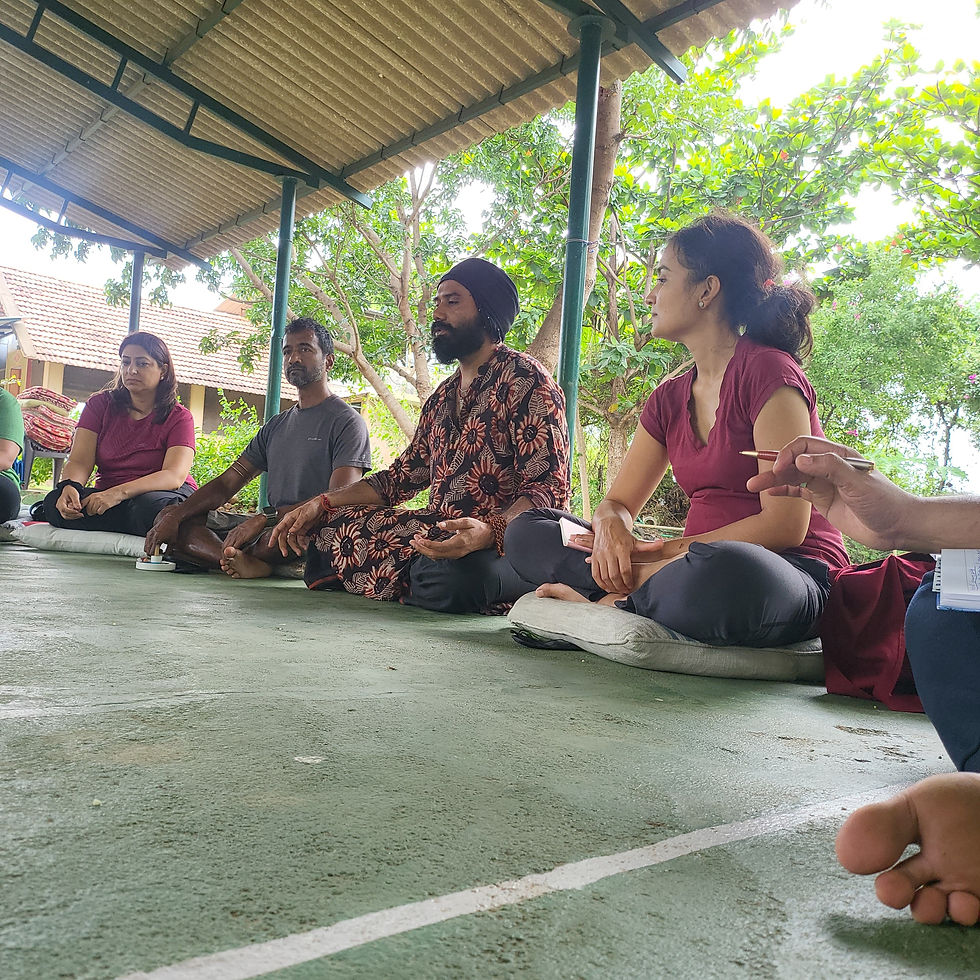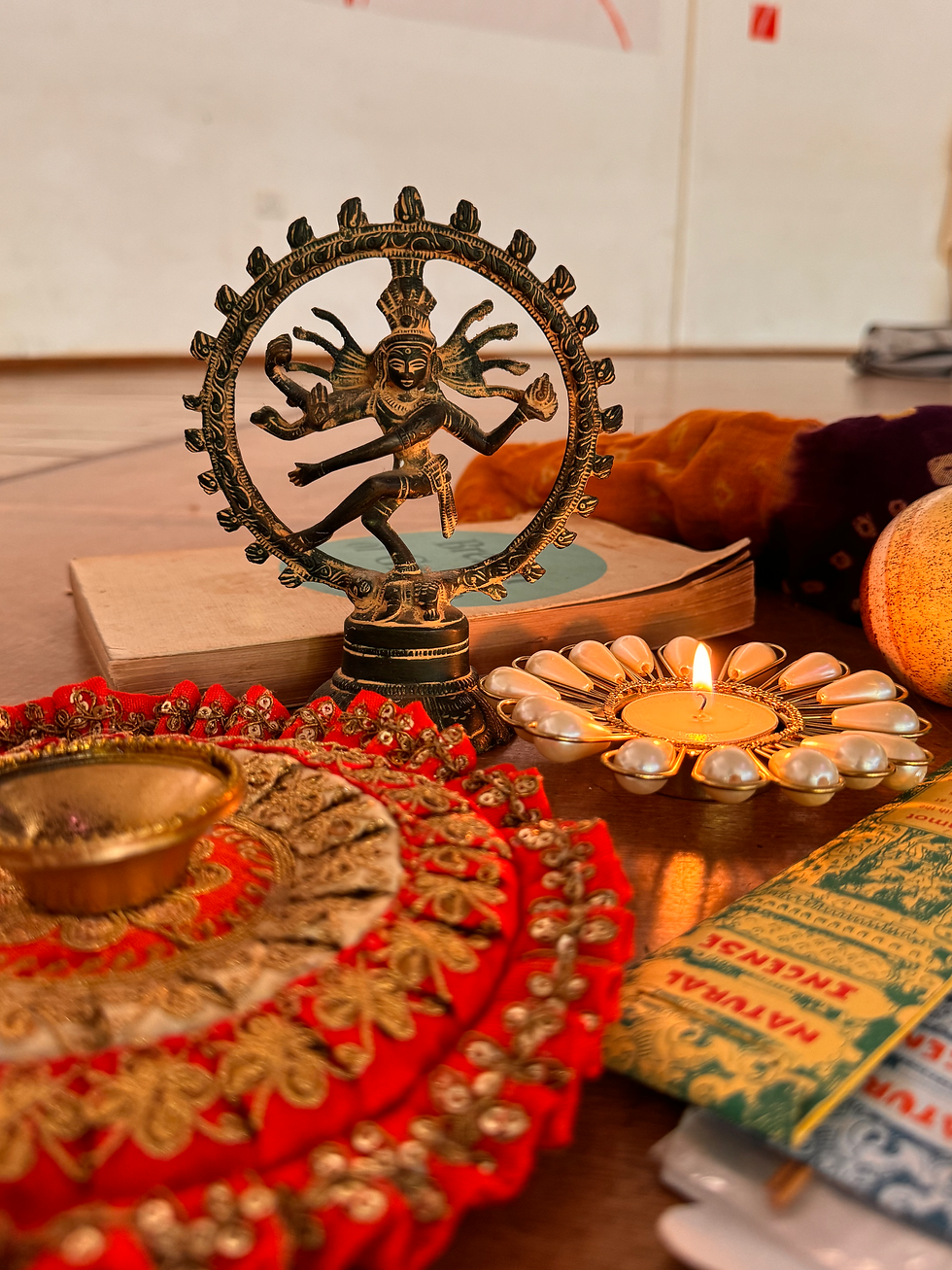Some thoughts on a minimum Kuta score
- Vikram Devatha

- Mar 10, 2019
- 7 min read
Updated: Oct 11, 2021
This article was originally published in The Astrological eMagazine, June 2015 issue. It re-looks at the Nakshatra Compatibility Table (henceforth “NCT”) that is used for matching of charts in Vedic Astrology, and questions the minimum score used in the matching of charts. Although the NCT is not the only indicator of compatibility between charts, it seems to provide some insights on what the minimum score should be. The term “relationships” is used, rather than the term “marriage”, since the NCT can be used for matching all forms of relationships between couples (dating, live in, extra martial, etc.) rather than only of *married* couples. The term “relationship” in this article does not include any other family relationship, such as that between father and son, between brothers, between mother in law and daughter in law and so on, even though the NCT could be used for these relationships as well.
The Basics
Each Nakshatra has 4 Padas, and there are 27 Nakshatras; hence, there are a total of 108 Padas. The Moon in the natal chart of the girl can reside in any of these 108 Padas. Similarly, the Moon in the boy’s natal chart can reside in any of the same 108 Padas. Hence, a total of 108^2 = 11664 possibilities exist. The NCT gives the Koota score of each Nakshatra Pada with every other Nakshatra Pada. Koota scores are arrived at by 12 factors, each contributing some points to the overall tally. The total amount of points to be gained is 36. The 12 factors are Dina, Gana, Nadi, Rashi, Graha Maitram, Vasyu, Varna, Yoni, Rajju, Sthree Deergah, Vedha and Mahendra. For a relationship to be compatible, a minimum of 21 points is required.
It is seen that the lowest match between any two Nakshatra Padas is 2 (e.g. between Uttarabhadra 1 and Chitra 3), the highest is 35 (Mrigashira 1 and Rohini 1), and the average Koota score is 20.13. This average is not calculated as (min+max)/2, which would yield 18.5. Instead, this average is calculated as the sum of all the Koota scores divided by the total number of possibilities. Since there are 108 Nakshatra Padas, and all 108 can be matched against any of the same 108 Padas, a total of 108^2 = 11664 possibilities exist. If we were to sum the Koota scores of all these possibilities, i.e. Ashwini 1st Pada with Ashwini 1st Pada + Ashwini 1st Pada with Ashwini 2nd Pada + Ashwini 1st Pada with Ashwini 3rd Pada and so on, and then divide this sum by 11664, we get 20.13 as the average. A total of 6027 (approx. 52%) pairs of Nakshatras have a Koota score less than 20.13 and the remaining 5637 pairs have a Koota score greater than 20.13.
The Nakshatra in which the girl’s Moon is located is compared with the Nakshatra in which the boy’s Moon is located, and the corresponding Koota score is noted. Most astrologers recommend a score of 21 Kootas to deem two Nakshatras as compatible (i.e. more than the average). If the minimum of 21 points is not obtained, then it is likely that the astrologer will advise against the relationship.
The Issue
There is more to a relationship that mere “happiness”. Also there are many factors that should be considered in the matching of charts (such as kuja dosha, longevity, mutual disposition, Navamsha analysis and presence of yogas to name a few) and not just the Koota score. There is much that contributes to a relationship breaking down, and a low Koota score could be only one of them.
However, for the purpose of our discussion, let us consider “simple” fulfillment as the aim of a relationship, and also the Koota analysis as the only means of matching charts.
This would then raise the question whether 21 is indeed a valid minimum to conclude to charts to be compatible. As mentioned before, this number seems to have been determined by the overall average, but needs to be reconsidered.
Almost 44% of all pairs of Nakshatras (5144 pairs) have a Koota score of more than 21. This would mean that nearly half of the worlds population is compatible with an individual (as per the Koota score). But is that true? It could be debated, because if that were the case, we would not be having so many relationship breakdowns, divorces, separations and heartbreaks in our society today. When I study the charts that have come to me, I see that although the Koota scores is above 21, couples have not been fulfilled in the relationship.
The question that is usually posed to an astrologer is whether an individual is compatible with another individual. The answer is usually based on which horoscope matches better with that of the individual. This seems to presuppose that the individual HAS TO enter into a relationship with another individual, and the question whether or not the individual must be in a relationship at all, seems to be bypassed. People usually don’t ask whether it is in their best interest to be in a relationship; rather they presuppose that they HAVE to be in a relationship, and then ask the astrologer whether they are compatible with this person or that. I am hardly, if not ever, asked whether what would be in the individual’s best interests, whether to be single or to be with another.
I believe that we need to increase the minimum Koota score that determines whether the charts match. We need to examine whether the individual would be fulfilled in a relationship, and pronounce that none of the charts presented will fulfill an individual if that is so the case. We do not need to succumb to the pressures of the client and deem a chart to be matching with another, if that will not bring an increased sense of contentment and wellbeing than if the individual were to be alone. The decision that is to be made during the reading, should be whether the individual is better off being single, or in a relationship with another person, rather than whether the individual should enter into a relationship with one person or the other viz. whether a relationship is beneficial for the long-term growth of the individual, or whether he/she is better off treading the life’s path alone.
But what is the minimum Koota score that must be considered?
The Alternative Approach
A closer observation of the NCT reveals that any Nakshatra when matched with itself yields 28 Kootas. i.e. when we match one Nakshatra Pada with itself. If there existed another individual who was born on the exact same date, time and place of birth as oneself, and if we were to test compatibility between these two persons, then the Koota score will be 28.
Looked at differently, this could also imply matching self to oneself. It is an indicator of the default level that a person operates at, when he/she is by himself/herself. This is the bar, which could used to compare all other relationships with. It does not mean that everyone operates at exactly the same level. Rather, it will help answer the question whether being with another person, will yield a higher level of fulfillment than being with oneself. And for this to happen, the Koota score needs to be higher than 28. If on the other hand, the number of Kootas is less than 28, then it can be argued that the person is better off being by himself/herself.
The number of combinations where the Kootas score is greater than 28 is far lesser than the number of combinations with 21 Kootas or more. Only 5.34% of matches are more than 28 (i.e. 623 combinations), a drop from 5637 pairs of Nakshatras with 21 Kootas or more. This means that the chances of finding a match with >28 Kootas reduces from 48% to a mere 5-6%. Examples of some combinations with >28 Kootas include: Ashwini 1-4 with Bharani 1-4, Ashwini 1-4 with Pushya 1-4 and Punarvasu 4 with Pushya 1-4 among others.
The number of Nakshatra Padas that any given Nakshatra matches with varies from Nakshatra to Nakshatra viz. not all Nakshatra Padas have the same number of matches. For some Nakshatras there are fewer matching Padas, than for others. And this varies for girls and boys. A detailed statistical analysis for each nakshatra is given as an appendix. It will be seen that for some Nakshatra Padas have no possibility of obtaining more than 28 Kootas. For example, if the boy’s Nakshatra is Krittika 1, Chitra 1-2 or Mula 1-4, then there is no Nakshatra Pada of the girl that can yield a Koota score of more than 28. Similarly for the girl, Krittika 1, Ashlesha 1-4, Chitra 1-2, Swathi 1-4 and Mula 1-4 have no matching Nakshatra Pada that gives more than 28 Kootas. It can be debated whether these individuals are better off being single, since any relationship can be said to reduce their level of wellbeing than what they would have by staying single.
The point I am trying to make is that Astrologers need to reconsider the minimum Koota score they prescribe. 21 Koota points is a very low minimum. Many couples have been experiencing relationship issues, and Astrologers need to raise the bar and ensure that individuals have a higher chance of a fulfilling relationship. One way of doing so, is to take 28 points as the minimum Koota score, since that is the score obtained when any Nakshatra Pada is matched with itself. On case this is not obtained, then it is perfectly ok for an individual to be single and tread life’s path alone.
The Next Steps
At the time of this writing, I don’t know what relationships with a score of greater than 28 look like. What the level of harmony in these couples would be, the kind of relationship that will manifest. It could be a relationship where the couple nurtures each other by their presence, rather than deplete and drain each other. It could be one where the relationship stands the test of time, but in a positive and wholehearted way, rather than force one to be in the relationship against all odds. It could imply that the couples are harmonious with each other in all matters of the relationship. The nature of such relationships is what needs to be studied further.
Relationships form the backbone in Indian society today. Marriage seems to be the single most sought after event that all parents wish for their children. At the same time, India is experiencing a changing landscape where relationships are concerned, with many couples exploring different forms of relationships, and many also calling off a relationship if they don’t feel fulfilled. Finding astrological solutions to ease the pain of relationships will go a long way.
Annex A: Chances of finding a match with 28+ Kootas for the girl

Annex B: Chances of finding a match with 28+ Kootas for the boy

Annex C: Graph of finding >28 Kootas for a girl





Good work Vikram! A very interesting read indeed! Is there somewhere I can get the scored points for each of the nakshatra-pada combinations? Also, did you analyze based only on Ashtakoot? There is also Dashakoot method which doesn't seem to be symmetric in scoring when matching with the same individual and varies per nakshatra-pada combination. Thanks!